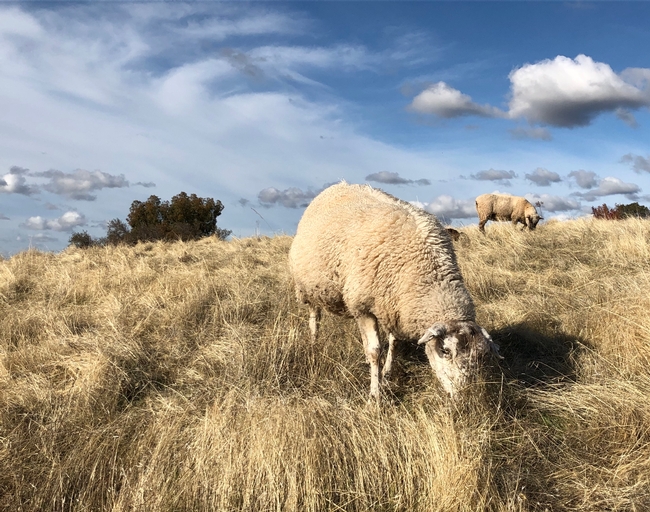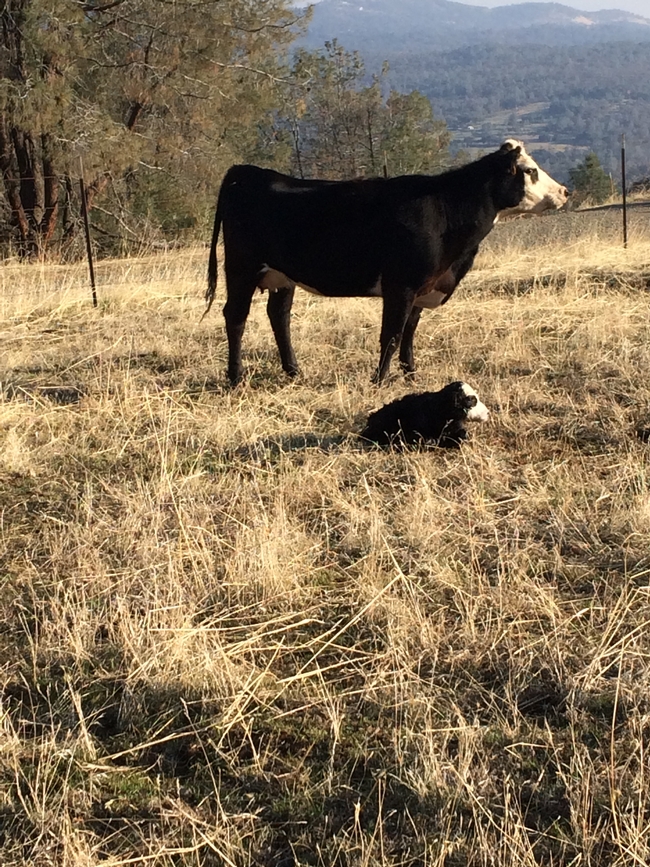As a grazer of sheep, at least from a forage management perspective, I live by the rule, "If the worst might happen, it probably will." A corollary to this rule is that pessimists are often pleasantly surprised. As a somewhat pessimistic rancher, I'm pleasantly surprised when we get fall rains and green grass before Halloween!
My pessimism manifests itself in a variety of ways. Like many ranchers, one of my go-to drought preparation tools is to use a conservative stocking rate. We maintain the number of animals that we know can graze even in a dry year, rather than permanently stocking for the best years. We can always adjust our stocking rate up when we have lots of grass (by purchasing feeder lambs or grazing someone else's sheep). This also means that we save some of the grass that grows each spring to come back to in the fall - this dry forage is the buffer that ensures we can carry our livestock through until the grass starts to grow again.
But this dry forage can represent a fire hazard in the summer and early autumn months. By consuming grass, broadleaf plants and brush, grazing and browsing livestock can help reduce fire risk by removing or modifying these fine fuels. For some, biomass utilization conjures images of high-tech power plants utilizing wood chips to generate electricity; for me, biomass utilization means that livestock eat plants; plants that might otherwise burn in the summer and fall.
These differing perspectives on the value of (or threat from) dry forage set up potential conflicts between grazing tenants and grazing landlords. The tenant, by necessity, wants to save grass for fall (a "non-rainy day" fund of sorts); the landlord wants to reduce fire danger. How do we meet the needs of both parties?
I'm not certain that I've figured out the answer to this conundrum, but perhaps our experience in managing our sheep this summer and fall might shed some light on one approach. After talking with the community that owns our winter grazing land, we weaned our lambs 3-4 weeks earlier than normal so that we could move ewes back to dry forage (dry ewes have significantly lower nutritional demands than lactating ewes or growing lambs). With input from the homeowners, we focused our summer grazing on the most vulnerable areas - south-facing slopes adjacent to homes, roadsides where fires could start, and weed-infested areas that needed summer grazing impact.
A careful accounting of our year suggests that our efforts, while beneficial to the neighborhood, were costly to us. Our early-weaned lambs were lighter than usual when we sold them, which meant lower income. Our replacement ewe lambs haven't grown as well as we expected. Our ewes needed supplemental protein (to allow them to digest dry grass) for 3-4 weeks longer than normal, which meant higher expenses. In other words, it cost us money to manage someone else's fuel loading problem.
These economic impacts are even more pronounced for cattle producers. Since sheep and goats have much shorter gestation periods, we typically have a 2-3 month window where their nutritional requirements are quite low - we can push them to manage dry forage and not impact next year's lamb or kid crop. Cattle, on the other hand, must re-breed 85-90 days after they deliver their calf - which makes nutrition between this year's calving and breeding for next year's calf crop a much more critical consideration.
Timing is also critical. In my experience, the critical time for reducing fuel loads with grazing is late spring and early summer - after the last rain but before the forage becomes tender dry. In reality, this means we need to cover lots of ground in a 4-6 week period - and few of us have enough livestock at that point in the grazing year to move that quickly. The challenge is further complicated by the fact that our annual grasses are less palatable at this growth stage.
Ultimately, grazing can be an incredibly important tool in reducing fire danger in our Mediterranean climate. Using this tool effectively, however, has value (and costs) - just like any other fuel-load reduction tool. As a rancher, I want to make sure I have some dry grass to come back to in the fall. This doesn't solve the fuel-loading problem; my community's fuel load is my fall forage. We need to re-think our grazing arrangements to reflect this reality!

